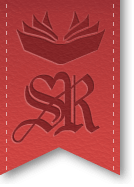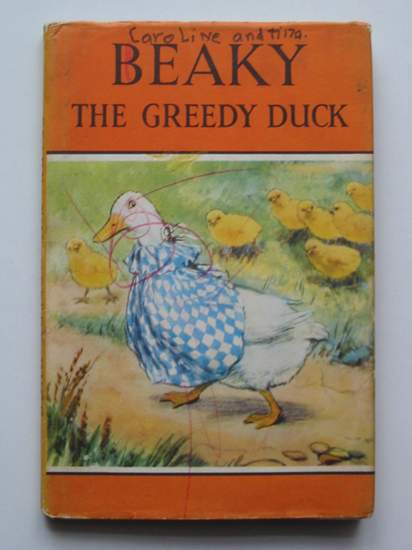The Growing Summer by Mary Noel Streatfeild
 One of the delights of working in a bookshop is helping customers to find 'old friends', those books they remember from childhood. Since coming to work in Rose's Books I too have been reunited with old friends and have reread books of my childhood. One author I remember well is Noel Streatfeild so when a collection of her books came our way, it was a good excuse to become reacquainted with 'old friends'!
One of the delights of working in a bookshop is helping customers to find 'old friends', those books they remember from childhood. Since coming to work in Rose's Books I too have been reunited with old friends and have reread books of my childhood. One author I remember well is Noel Streatfeild so when a collection of her books came our way, it was a good excuse to become reacquainted with 'old friends'!
 Noel Streatfeild was born on Christmas Eve in 1895 in Sussex where her father was curate. Her great grandmother was the prison reformer, Elizabeth Fry. She didn't particularly enjoy school and her father was asked to remove her from Hastings and St. Leonards College. During the first world war Noel worked in the kitchens at a hospital for wounded soldiers and, later, as a munitions worker at Woolwich Arsenal. After the war Noel entered the Academy of Dramatic Art and trained as an actress. Her career came to an end following a tour ofAustralia in 1929. While she was on this tour her father died and she was unable to get home in time for the funeral. Disillusioned with acting she chose to pursue a new career.
Noel Streatfeild was born on Christmas Eve in 1895 in Sussex where her father was curate. Her great grandmother was the prison reformer, Elizabeth Fry. She didn't particularly enjoy school and her father was asked to remove her from Hastings and St. Leonards College. During the first world war Noel worked in the kitchens at a hospital for wounded soldiers and, later, as a munitions worker at Woolwich Arsenal. After the war Noel entered the Academy of Dramatic Art and trained as an actress. Her career came to an end following a tour ofAustralia in 1929. While she was on this tour her father died and she was unable to get home in time for the funeral. Disillusioned with acting she chose to pursue a new career.
Noel turned to writing as a way of earning a living. Initially she wrote for adults and her first novel The Whichartswas published in 1931. Later she was persuaded to write for children by Mabel Carey of J.M. Dent and in 1936Ballet Shoes, illustrated by Ruth Gervis (Noel's sister), was published. This was short-listed for the first Carnegie Medal in 1936. Noel was awarded the Carnegie Medal in 1938 for The Circus is Coming.
During the Second World War Noel continued to write as well as doing voluntary work as an Air Raid Warden in Mayfair, volunteering at a mobile canteen in Deptford and speaking on behalf of the WRVS. After the war she became a public figure lecturing on children's books. In 1983 she was awarded the OBE in the New Year's Honour's list. Noel died in a nursing home in December 1986.
 Many of Noel's books are set in the world of the performing arts - theatre, ballet, cinema etc. Her first hand knowledge of the theatre helped greatly when writing these books but if she knew little of the subject she would do extensive research. For example before writing The Circus is Coming she spent time with the Bertram Mills Circus. It is said that she was one of the pioneers of the career novel but, for Noel, it wasn't writing about the profession that was important, it was the characters and how they developed. Many of her later books are family stories and it is one of these that I have chosen.
Many of Noel's books are set in the world of the performing arts - theatre, ballet, cinema etc. Her first hand knowledge of the theatre helped greatly when writing these books but if she knew little of the subject she would do extensive research. For example before writing The Circus is Coming she spent time with the Bertram Mills Circus. It is said that she was one of the pioneers of the career novel but, for Noel, it wasn't writing about the profession that was important, it was the characters and how they developed. Many of her later books are family stories and it is one of these that I have chosen.
The Growing Summer was first published in 1966 andEdward Ardizzone provided the illustrations. It was reprinted in 1984. A paperback version was published by Penguin books in 1968. This title is published as The Magic Summer in the U.S.A. Interestingly a six part television series was produced by London Weekend Television in 1969. It was filmed in Bantry at many of the locations Noel had envisaged when writing the book.
The Growing Summer centres around the Gareth family: Alex aged 13, Penny aged 12, Robin aged 10 and Naomi aged 9. At the beginning of the book they are living a normal life in London with their parents. Mr Gareth is a doctor who specialises in medical research and Mrs Gareth looks after the home and family. Mr. Gareth goes to work in the Far East leaving the family behind. Their world is turned upside down when he becomes dangerously ill and Mrs Gareth has to go and look after him.
But what is to become of the children? Their only grandparents are in New Zealand and Mrs Gareth doesn't have time to look for someone to care for the children at their London home. The only option is for the children to go toIreland to their father's relative - Great Aunt Dymphana who lives near Bantry in Ireland. The children have never met her but they shut up the London house and set off on their adventure.
Great Aunt Dymphana is an eccentric elderly lady. The children's first meeting with her at the airport in Cork leaves them speechless as she is described as being 'more like an enormous bird than a great aunt' - she wore a black cape which billowed around her as she moved and had a nose that looked like a hooked beak. Later the children discover she has a fondness for reciting poetry or lines from books, most of which mean nothing to the children. She drives them back to her house, Reenmore, terrifying them in the process with her erratic driving! The house is not particularly welcoming, being old and gloomy, something not helped by their arrival in near darkness. Things don't look better in the morning when they learn from Aunt Dymphana that they are to look after themselves. None of them have much experience of cooking, shopping or cleaning.



However the biggest problem is Stephen. He suddenly appeared in their part of the house one day claiming to be on the run with his father from Communists. The children reluctantly agree to hide him but he is not grateful for their help. He complains about the food, the fact he can't go out and that the others spend little time with him. Everyone gets exasperated with him and can't wait for him to leave. Robin is sure he has seen him somewhere before and not only on the plane on the way to Ireland, but he can’t remember where. A twist at the end of the book reveals Stephen's real identity!
Gradually the children learn to adapt and although life isn't easy they make the best of what they have. This includes helping Aunt Dymphana in the garden after she buys a wheelbarrow and tools at a sale. Not their favourite occupation, the children help her clear and dig the ground to plant herbs - Aunt Dymphana is great believer in herbs both for cooking and medicinal purposes. Their daily lives fall into a pattern of helping in the garden, bathing and picnicking and going their separate ways to meet with other people. Alex goes fishing either with Eamon-the-fish or Miss Oonagh. Penny spends her time poring over pages from Mrs Beeton and asking Mrs O'Brien for help. Robin and Naomi develop friendships with the local children. They become more independent and considerate and try to help each other.
The news that their father has recovered eventually reaches Reenmore and the children prepare to go home. Although they are keen to seen their parents they have mixed feelings about leaving Reenmore. As Robin puts it “ But now we're going I feel sort of sorry and glad mixed, which is something I never expected to feel about Reenmore.” After a final drive with Aunt Dymphana to the airport, the children give her a present before she disappears and they return to their normal life in London.
Contributed by Catriona.
(Published on 9th Dec 2014 )













